-
 bitcoin
bitcoin $122288.232522 USD
0.16% -
 ethereum
ethereum $4480.662914 USD
-0.22% -
 xrp
xrp $2.962747 USD
-2.32% -
 tether
tether $1.000120 USD
-0.05% -
 bnb
bnb $1145.654223 USD
-2.07% -
 solana
solana $227.105217 USD
-1.67% -
 usd-coin
usd-coin $0.999548 USD
-0.02% -
 dogecoin
dogecoin $0.250875 USD
-2.04% -
 tron
tron $0.340654 USD
-0.49% -
 cardano
cardano $0.837968 USD
-2.52% -
 hyperliquid
hyperliquid $48.960449 USD
0.06% -
 chainlink
chainlink $22.049280 USD
-1.33% -
 ethena-usde
ethena-usde $1.000404 USD
0.02% -
 sui
sui $3.586212 USD
0.20% -
 avalanche
avalanche $29.894916 USD
-4.18%
How is DeFi's gas fee calculated?
DeFi's gas fees are determined by Ethereum blockchain factors like transaction complexity and network congestion, necessitating an understanding of gas fee dynamics to optimize transaction costs.
Feb 18, 2025 at 08:24 am
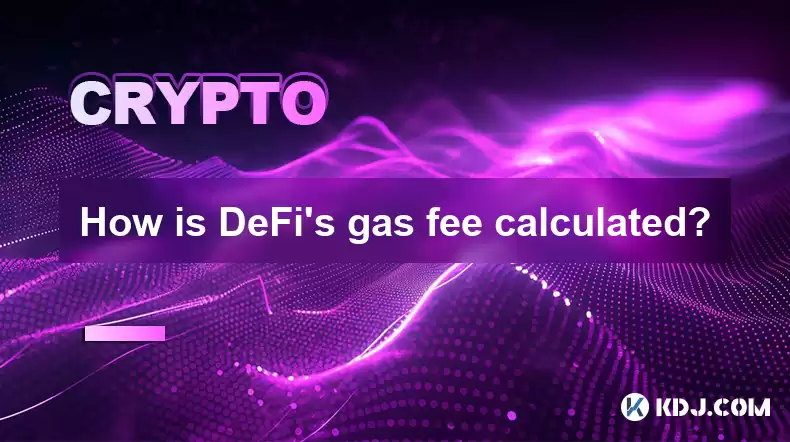
- Gas fees are transaction fees on blockchain networks like Ethereum that determine how quickly transactions are processed.
- DeFi applications primarily use Ethereum, so their gas fees depend on various factors related to the Ethereum blockchain.
- High demand for transactions, network congestion, and complex operations lead to higher gas fees.
- Understanding gas fee dynamics is crucial for optimizing transaction costs.
- DeFi applications primarily operate on the Ethereum blockchain, which uses a proof-of-work consensus algorithm to validate transactions.
- Transactions on Ethereum are represented as digital contracts called smart contracts, which require computational power to execute.
- The Ethereum network charges a fee for using this computational power, known as the gas fee.
- Gas fees vary depending on the complexity of transactions. Simple transactions, such as sending tokens between wallets, require less computational effort and therefore have lower gas fees.
- Complex transactions, such as interacting with DeFi protocols or executing smart contracts, require more computational resources and have higher gas fees.
- Network congestion occurs when there are more transactions than the network can handle, resulting in longer processing times.
- During peak usage periods, when many users are transacting simultaneously, gas fees increase to incentivize miners to prioritize and process transactions faster.
- Gas fees are typically calculated using the formula: Gas Fee = Gas Price x Gas Limit
- Gas Price: Fee paid per unit of gas consumed (usually measured in gwei)
- Gas Limit: Maximum amount of gas the user is willing to spend on a transaction
- By adjusting the Gas Price, users can influence the processing speed of their transactions.
- There are several tools that provide real-time estimates of gas prices on the Ethereum network.
- Users can utilize these tools to determine the optimal gas price for their transactions, balancing transaction speed with cost.
A: DeFi gas fees are influenced by a combination of facteurs: network congestion, transaction complexity, and fluctuating demand for computational resources.
Q: How can I reduce DeFi gas fees?A: Consider transacting during off-peak hours, using Layer 2 solutions, or optimizing the Gas Limit settings to reduce the number of units of gas consumed.
Q: What is the future of DeFi gas fees?A: Ongoing research and development efforts, such as Layer 2 solutions and Ethereum's transition to proof-of-stake, hold promise for reducing gas fees and improving scalability within the DeFi ecosystem.
Disclaimer:info@kdj.com
The information provided is not trading advice. kdj.com does not assume any responsibility for any investments made based on the information provided in this article. Cryptocurrencies are highly volatile and it is highly recommended that you invest with caution after thorough research!
If you believe that the content used on this website infringes your copyright, please contact us immediately (info@kdj.com) and we will delete it promptly.
- BlockDAG, DOGE, HYPE Sponsorship: Crypto Trends Shaping 2025
- 2025-10-01 00:25:13
- Deutsche Börse and Circle: A StableCoin Adoption Powerhouse in Europe
- 2025-10-01 00:25:13
- BlockDAG's Presale Buzz: Is It the Crypto to Watch in October 2025?
- 2025-10-01 00:30:13
- Bitcoin, Crypto, and IQ: When Genius Meets Digital Gold?
- 2025-10-01 00:30:13
- Stablecoins, American Innovation, and Wallet Tokens: The Next Frontier
- 2025-10-01 00:35:12
- NBU, Coins, and Crypto in Ukraine: A New Yorker's Take
- 2025-10-01 00:45:14
Related knowledge

How to track DeFi activity on a block explorer
Sep 04,2025 at 05:36pm
Bitcoin's Role in Decentralized Finance1. Bitcoin remains the cornerstone of the cryptocurrency ecosystem, serving as both a store of value and a benc...
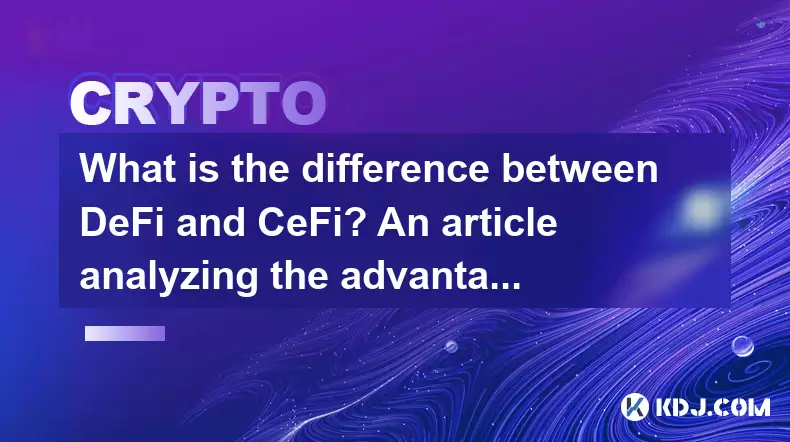
What is the difference between DeFi and CeFi? An article analyzing the advantages and disadvantages of both
Jun 13,2025 at 03:57am
Understanding the Foundations of DeFi and CeFiTo fully grasp the difference between DeFi (Decentralized Finance) and CeFi (Centralized Finance), it’s ...
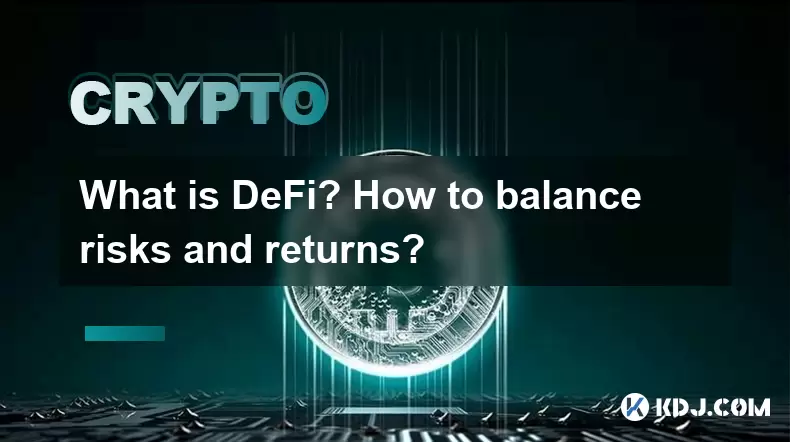
What is DeFi? How to balance risks and returns?
May 31,2025 at 12:22pm
What is DeFi? How to Balance Risks and Returns? Decentralized Finance, commonly known as DeFi, represents a revolutionary shift in the financial ecosy...
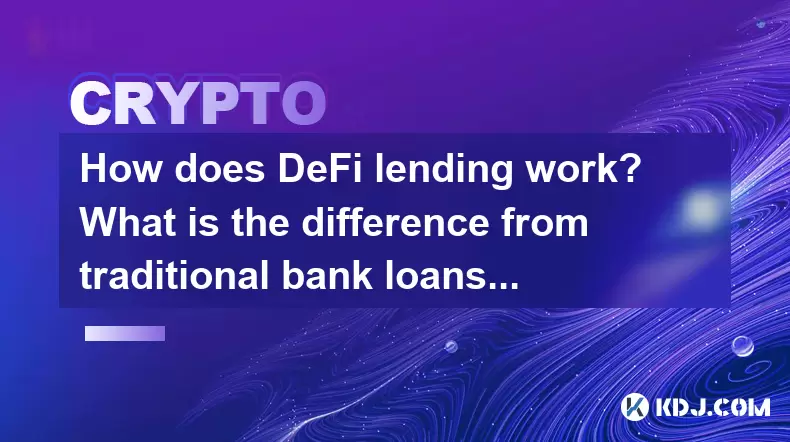
How does DeFi lending work? What is the difference from traditional bank loans?
May 29,2025 at 05:36pm
Introduction to DeFi LendingDeFi lending, or decentralized finance lending, represents a revolutionary shift in the way borrowing and lending are cond...
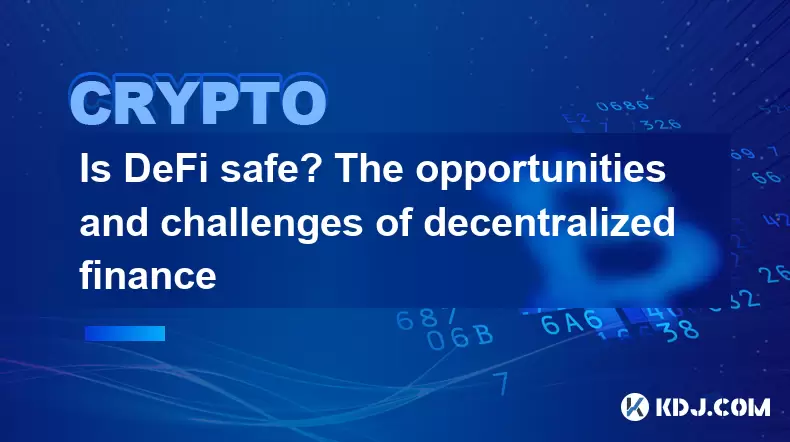
Is DeFi safe? The opportunities and challenges of decentralized finance
May 27,2025 at 02:28pm
Decentralized Finance, commonly known as DeFi, has revolutionized the financial landscape by offering a range of financial services without the need f...

DeFi Mining Tutorial: How to Maximize Profits and Reduce Risks?
May 27,2025 at 07:42am
DeFi, or Decentralized Finance, has opened up a new world of opportunities for crypto enthusiasts looking to maximize their profits through various mi...

How to track DeFi activity on a block explorer
Sep 04,2025 at 05:36pm
Bitcoin's Role in Decentralized Finance1. Bitcoin remains the cornerstone of the cryptocurrency ecosystem, serving as both a store of value and a benc...

What is the difference between DeFi and CeFi? An article analyzing the advantages and disadvantages of both
Jun 13,2025 at 03:57am
Understanding the Foundations of DeFi and CeFiTo fully grasp the difference between DeFi (Decentralized Finance) and CeFi (Centralized Finance), it’s ...

What is DeFi? How to balance risks and returns?
May 31,2025 at 12:22pm
What is DeFi? How to Balance Risks and Returns? Decentralized Finance, commonly known as DeFi, represents a revolutionary shift in the financial ecosy...

How does DeFi lending work? What is the difference from traditional bank loans?
May 29,2025 at 05:36pm
Introduction to DeFi LendingDeFi lending, or decentralized finance lending, represents a revolutionary shift in the way borrowing and lending are cond...

Is DeFi safe? The opportunities and challenges of decentralized finance
May 27,2025 at 02:28pm
Decentralized Finance, commonly known as DeFi, has revolutionized the financial landscape by offering a range of financial services without the need f...

DeFi Mining Tutorial: How to Maximize Profits and Reduce Risks?
May 27,2025 at 07:42am
DeFi, or Decentralized Finance, has opened up a new world of opportunities for crypto enthusiasts looking to maximize their profits through various mi...
See all articles










































































